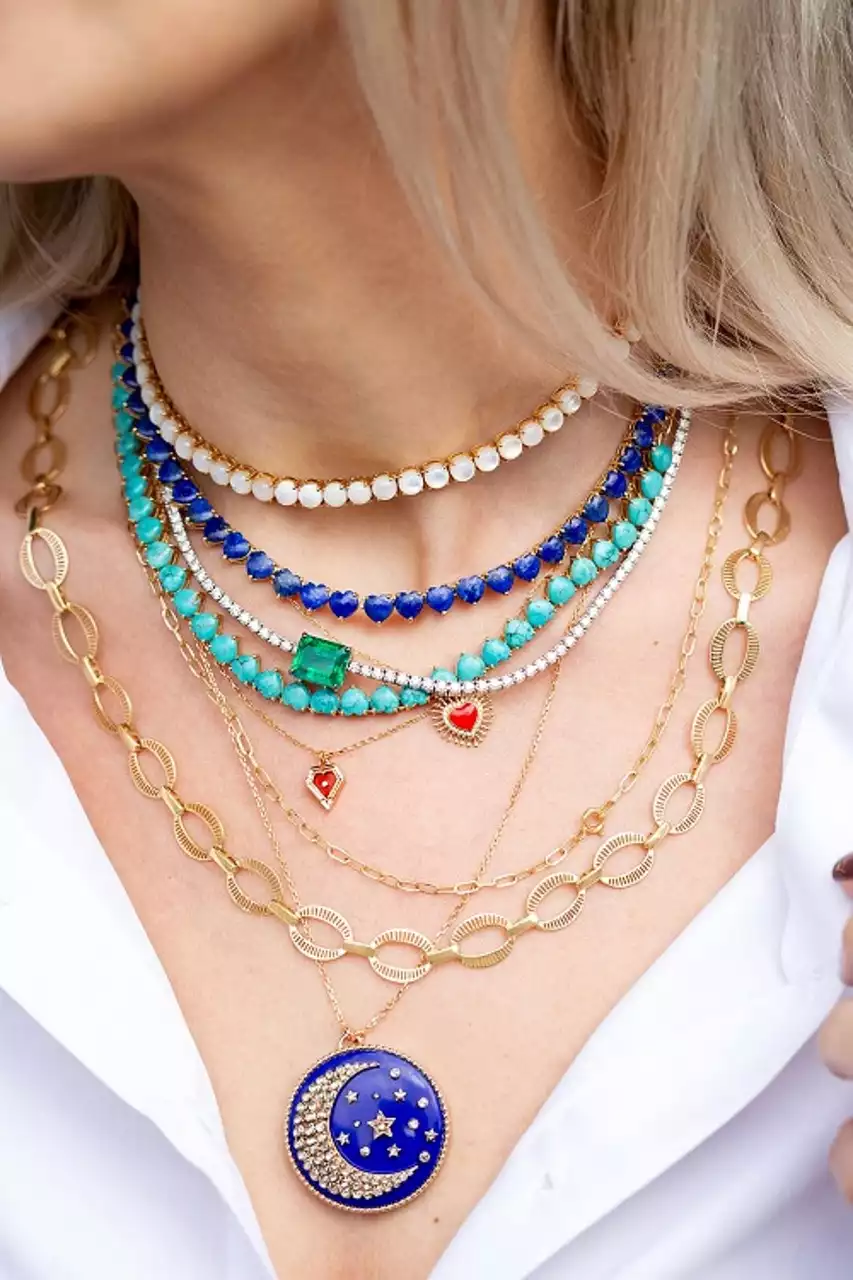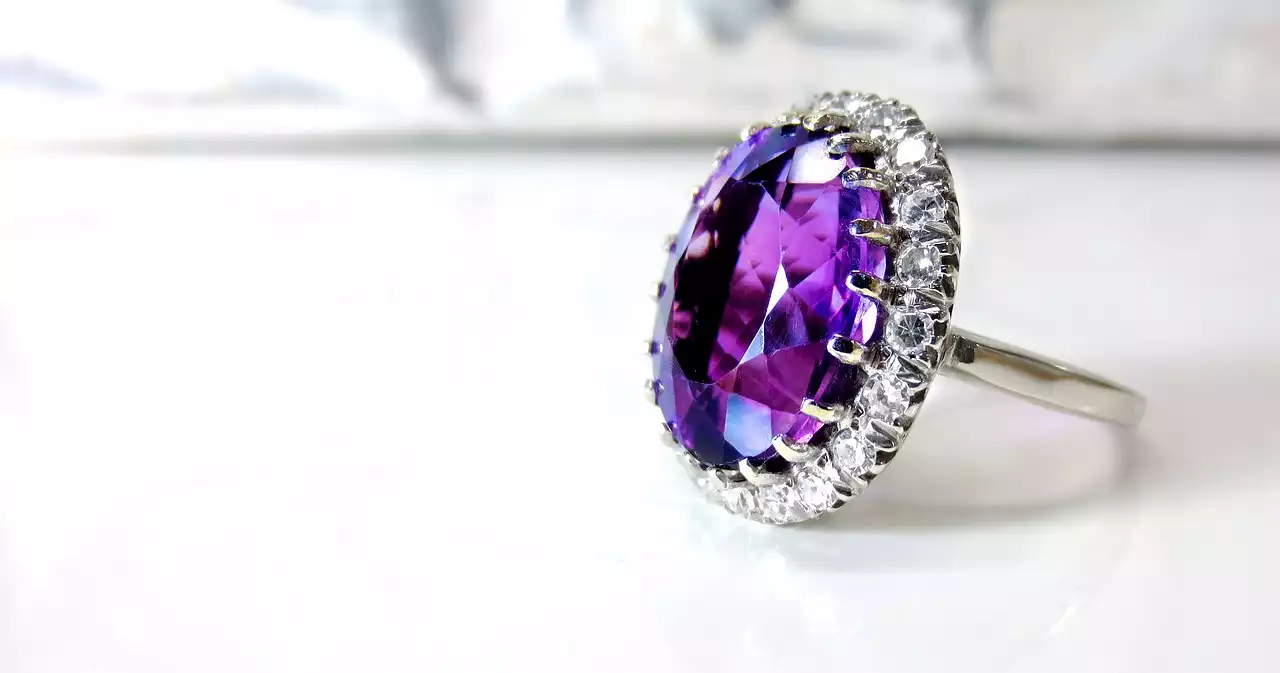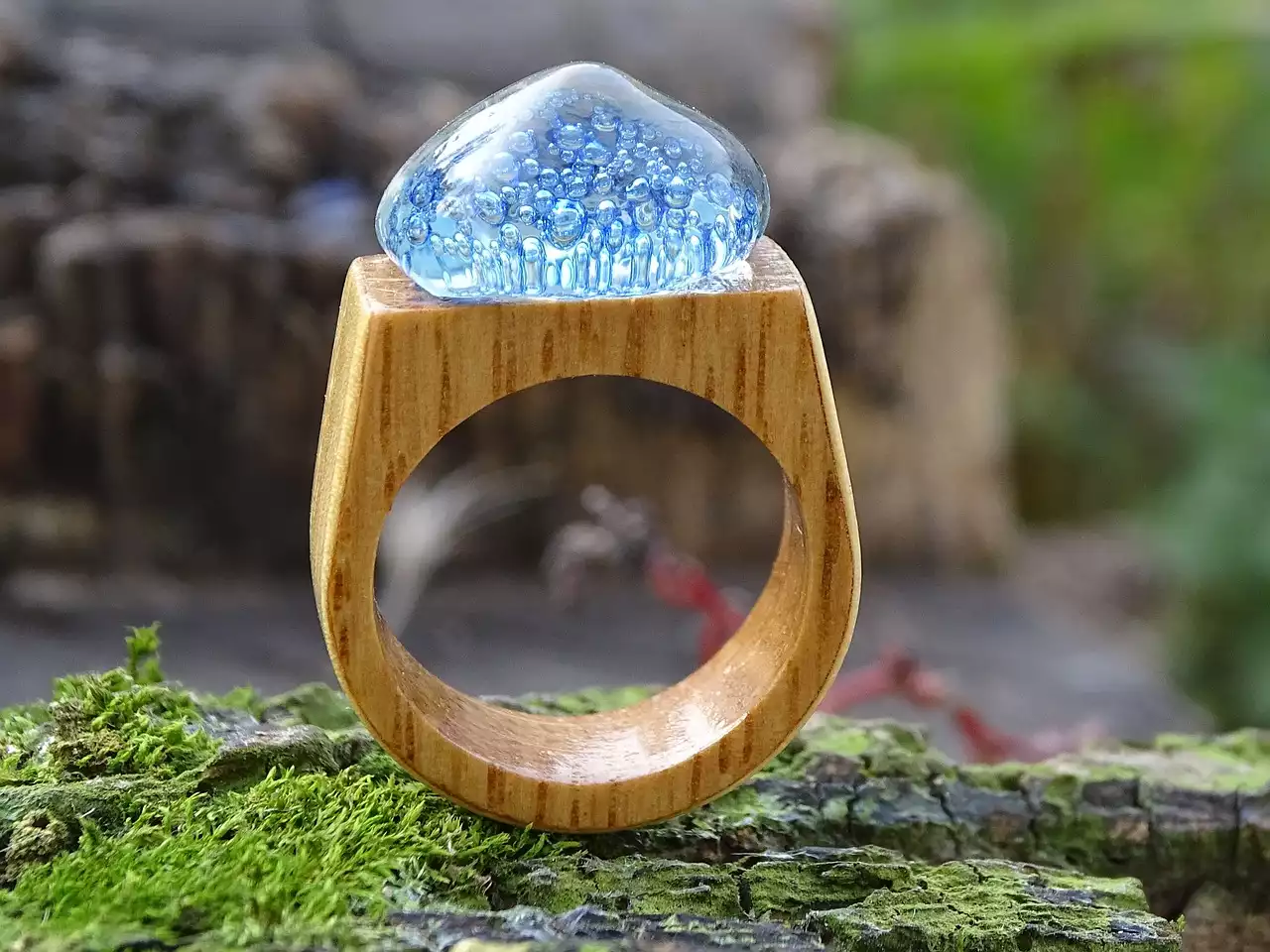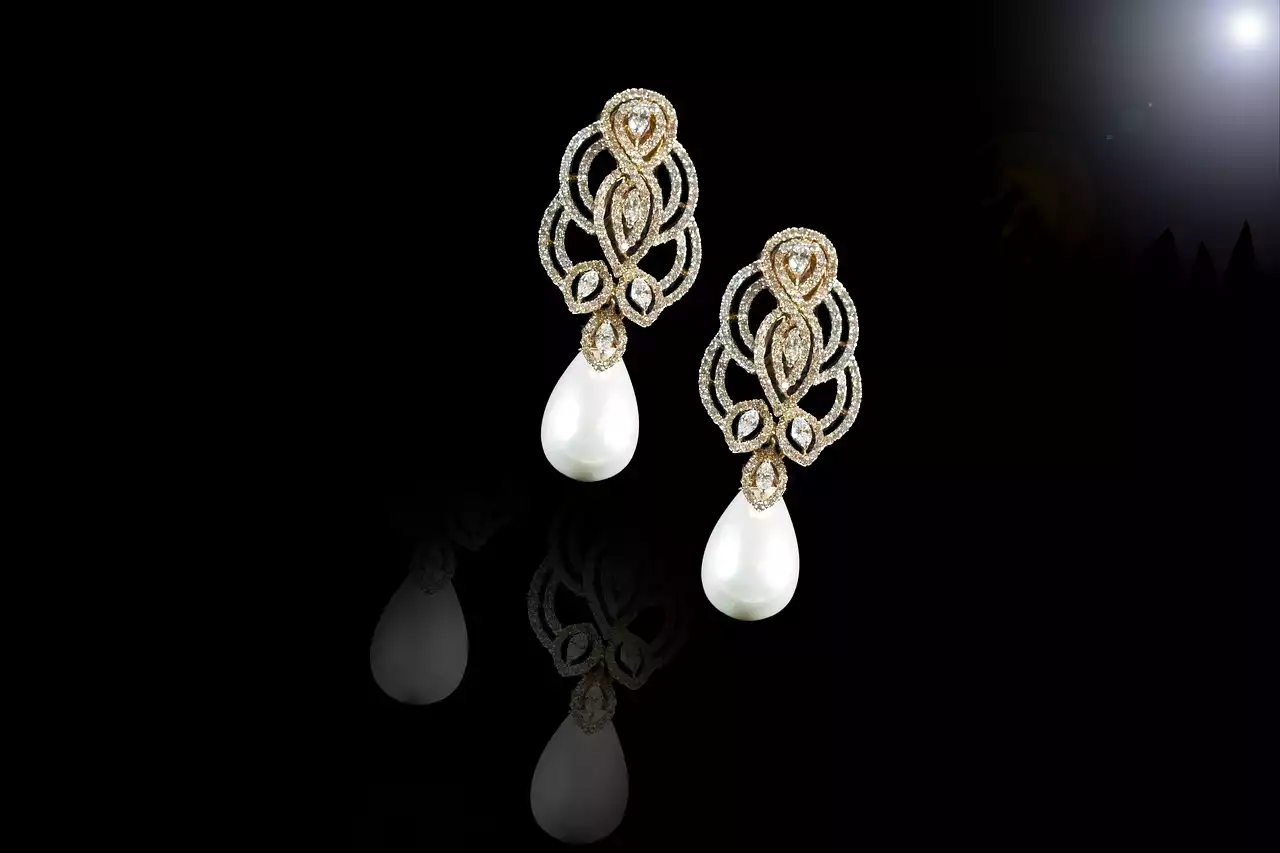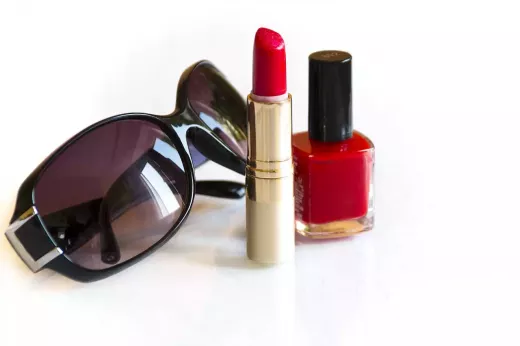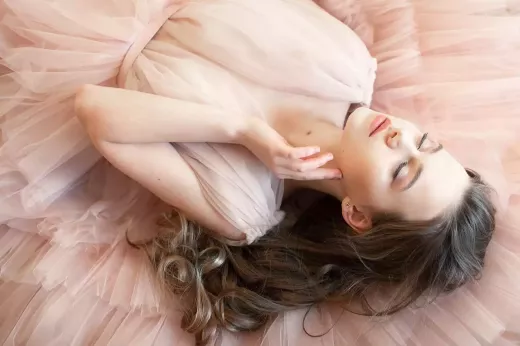Consider your outfit style and occasion
When it comes to choosing the perfect jewelry for your outfit, the first thing you need to consider is the style and occasion. Whether you're going to a black-tie event or a casual brunch with friends, your jewelry should complement your outfit and the occasion. For formal events, it's best to stick to classic pieces like diamond studs or a simple pearl necklace. For a more casual look, you can experiment with bolder, more colorful pieces.
Another important factor to consider is the style of your outfit. If you're wearing a bohemian maxi dress, you may want to opt for more natural, earthy jewelry like wooden bangles or a beaded necklace. For a sleek, modern outfit, you may want to choose more minimalist, geometric jewelry like a simple gold pendant or hoop earrings. Ultimately, your jewelry should enhance your outfit and reflect your personal style.
When choosing jewelry for a specific occasion, it's important to consider the dress code. If you're attending a wedding or a formal event, you may want to choose more elegant, understated pieces. On the other hand, if you're going to a casual event or a music festival, you can be more playful and experimental with your jewelry.
Choosing jewelry based on neckline
When it comes to choosing jewelry, one of the most important factors to consider is the neckline of your outfit. Different necklines require different types of jewelry to complement them. For example, if you're wearing a strapless dress, you may want to choose a statement necklace that sits just above your collarbone. This will draw attention to your neck and shoulders and create a balanced, elegant look.
If you're wearing a V-neck top or dress, you may want to choose a delicate pendant necklace that sits just above the neckline. This will create a flattering, elongated effect and draw attention to your face. For a high-necked outfit, you may want to opt for statement earrings or a bold bracelet to add interest and balance out the neckline.
When choosing jewelry based on neckline, it's important to consider the size and style of the piece. A delicate pendant necklace may work well with a V-neck outfit, but it may get lost in a high-necked outfit. Similarly, a chunky statement necklace may overpower a delicate neckline. It's all about finding the right balance and creating a cohesive look.
Choosing jewelry based on colors
Another important factor to consider when choosing jewelry is the color of your outfit. Your jewelry should complement and enhance the colors in your outfit, rather than clash with them. If you're wearing a neutral outfit like black or white, you can experiment with bolder, more colorful jewelry. For example, a pair of bright red earrings can add a pop of color to a black dress and create a bold, eye-catching look.
If you're wearing a colorful outfit, you may want to choose more understated, neutral jewelry to balance out the look. For example, a simple gold necklace can complement a colorful blouse or dress without overpowering it. Alternatively, you can choose jewelry that matches the color of your outfit for a cohesive, monochromatic look.
When choosing jewelry based on colors, it's important to consider the tone and intensity of the colors. A cool-toned outfit like a blue dress may look best with silver or white gold jewelry, while a warm-toned outfit like a red blouse may look better with gold or rose gold jewelry. It's all about finding the right balance and creating a harmonious look.
Matching metals and gemstones
When it comes to choosing jewelry, another important factor to consider is the type of metal and gemstones. Different metals and gemstones can create different effects and complement different outfits. For example, gold jewelry can create a warm, luxurious look, while silver jewelry can create a cool, sophisticated look.
Gemstones can also add interest and color to your jewelry. For example, a pair of sapphire earrings can complement a blue dress or blouse, while a ruby necklace can add a pop of color to a neutral outfit. When choosing gemstones, it's important to consider the intensity and saturation of the color, as well as the cut and clarity of the stone.
When it comes to matching metals and gemstones, there are no hard and fast rules. You can mix and match different metals and gemstones to create a unique, eclectic look. However, it's important to consider the overall effect and balance of the jewelry. If you're wearing a gold necklace, you may want to choose gold earrings rather than silver or rose gold to create a cohesive look.
Layering jewelry
One of the hottest trends in jewelry right now is layering. Layering involves wearing multiple pieces of jewelry at once to create a bohemian, eclectic look. However, layering can be tricky and it's important to get the right balance and proportions.
When layering jewelry, it's important to start with a focal point. This could be a statement necklace or a pair of bold earrings. From there, you can add more delicate pieces like thin gold chains or simple stud earrings. The key is to create a balance of different sizes, textures, and colors.
When layering bracelets or bangles, it's important to consider the proportions of your wrists and forearms. If you have small wrists, you may want to choose thinner, more delicate bracelets to avoid overwhelming your arms. If you have larger wrists, you can experiment with chunky bangles or statement cuffs.
Balancing proportions with jewelry
Another important factor to consider when choosing jewelry is the balance of proportions. Your jewelry should complement and balance out the proportions of your outfit, rather than overpowering them. For example, if you're wearing a billowy, voluminous dress, you may want to choose more delicate, understated jewelry like thin gold hoops or a simple pendant necklace.
On the other hand, if you're wearing a sleek, form-fitting outfit, you may want to choose bolder, more statement jewelry like a chunky bracelet or a pair of oversized earrings. The key is to create a balanced, harmonious look that complements your outfit without overpowering it.
When it comes to balancing proportions, it's also important to consider your own body proportions. If you have a long neck, you may want to choose shorter necklaces to avoid elongating your neck too much. If you have a round face, you may want to choose longer, more elongated earrings to create a slimming effect.
Avoiding over-accessorizing
One of the biggest mistakes women make when choosing jewelry is over-accessorizing. Too much jewelry can be overwhelming and can detract from the overall effect of your outfit. When it comes to choosing jewelry, less is often more.
To avoid over-accessorizing, it's important to choose one or two statement pieces and build around them. For example, if you're wearing a statement necklace, you may want to choose simple stud earrings and a delicate bracelet to balance out the look. Alternatively, if you're wearing oversized earrings, you may want to skip the necklace altogether and opt for a simple bracelet or bangle.
Another way to avoid over-accessorizing is to consider the overall effect of your outfit. If you're wearing a bold, colorful outfit, you may want to choose more understated jewelry to balance out the look. On the other hand, if you're wearing a simple, neutral outfit, you can experiment with bolder, more colorful jewelry.
Tips for accessorizing with earrings, necklaces, bracelets, and rings
When it comes to accessorizing with different types of jewelry, there are a few tips to keep in mind. Here are some of our top tips for accessorizing with earrings, necklaces, bracelets, and rings:
Earrings
- Choose earrings that complement your face shape. For example, if you have a round face, you may want to choose longer, more elongated earrings to create a slimming effect.
- Consider the style and color of your outfit when choosing earrings. If you're wearing a colorful outfit, you may want to choose more understated, neutral earrings to balance out the look.
- When layering earrings, start with a statement pair and add more delicate, understated earrings to create a balanced, harmonious look.
Necklaces
- Choose necklaces based on the neckline of your outfit. Different necklines require different types of necklaces to complement them.
- Consider the type of metal and gemstones when choosing a necklace. Different metals and gemstones can create different effects and complement different outfits.
- When layering necklaces, start with a statement piece and add more delicate, understated necklaces to create a bohemian, eclectic look.
Bracelets
- Consider the proportions of your wrists and forearms when choosing bracelets or bangles. If you have small wrists, you may want to choose thinner, more delicate bracelets to avoid overwhelming your arms.
- When layering bracelets, start with a statement cuff or bangle and add more delicate, understated bracelets to create a balanced, harmonious look.
- Consider the overall effect of your outfit when choosing bracelets. If you're wearing a bold, colorful outfit, you may want to choose more understated bracelets to balance out the look.
Rings
- Consider the size and style of your fingers when choosing rings. If you have long, slender fingers, you may want to choose larger, more statement rings. If you have shorter fingers, you may want to opt for more delicate, understated rings.
- When layering rings, start with a statement ring and add more delicate, understated rings to create a balanced, harmonious look.
- Consider the type of metal and gemstones when choosing rings. Different metals and gemstones can create different effects and complement different outfits.
